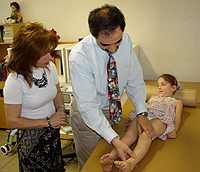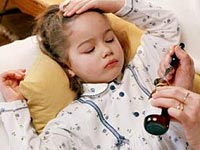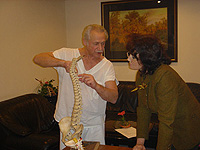Differential diagnosis of appendicitis in children is carried out with diseases of the gastrointestinal tract organs and intestinal infections, given how appendicitis in children of different age-related categories is manifested. About this in the article.
Content
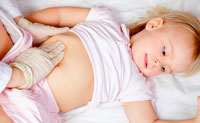
How
Recognize a child's appendicitis? Where and how manifests? Appendicitis
children call inflammation of a worm-like process that
Certain conditions swell and inflicts. Constant phenomena in the cavity of Apandix
SPOSOAssign its inflection and blockage of the lumen with wheel masses,
It is also possible to swell the mucous membrane under the influence of an irritant,
For example, small worms or their livelihoods. Permanent
Overflowing a blind intestine makes it difficult for its full emptying during constipation,
caused by unbalanced and irrational nutrition. Overload
Gastrointestinal Baby Tract proteins of animal origin, lack
vegetable food and sufficient fiber — All this leads to
Strengthening the processes of rotting and fermentation in the intestine. It is worth noting that
There is no specific causative agent, most often autogenous intestinal flora
Causes a pathological process.
Children's appendicitis
Symptoms and signs
Spicy
Apandicitis in children — common surgical disease, more often in
Aged 4-15 years old. Kids under the age of 3 are protected
own anatomy: they usually have a worm-shaped process in the form of a cone and
Almost no congestive phenomena due to high mobility of the blind intestine. But
If the disease does not happen, it starts with ordinary symptoms: a child
worried, not sleeping, vomiting appears, the temperature and pain increases
iliac region. The kid shakes with a hacker, feels the gain of pain when
Change of position. Parents at this stage should show maximum attention to
Baby complaints, in no case do not use a warm height or
painkillers, and that, and the other only smoothes the symptoms and leads from
True painting disease. No self-medication — Consultation is urgently needed
Children's Surgeon.
Acute pain
in the epigastric or octopup region, vomiting, not bringing relief,
Increase body temperature up to 38c and above, pulse increase, function violation
Gastrointestinal tract, constipation or diarrhea — these are all signs of inflammation
heart-shaped process or child
Appendicitis. Symptom
Brush-Blüsterberg is expressed in increasing soreness after palpation with
The subsequent excretion of the hand, the symptom of Filatov is manifested by progressive gain
Pain and tension of the muscles of the abdominal wall.
Stage of Apandicitis
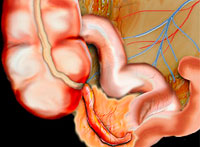
Acute process
manifests itself a sudden pain, which first has a spilled character and only
Then, after a few hours, concentrated at the bottom of the abdomen on the right, it increases
and increases noticeably when coughing. If the child suffered an attack of sharp
appendicitis when the inflammatory process limited himself to the mucous membrane, and not
was operated on for any reason, with each subsequent hour
becomes more stronger, appendicitis goes into the next stage when without
help surgeon can not do. In the development of appendicitis, sequential stages
Development:
-
stage
Catarial inflammation — characterized by an edema of the draft-shaped process and
redness of the serous shell; -
phlegmonous
stage — this is purulent inflammation of all layers of appendix with ulceration and
suppuration; -
gangrenous
The process is marked by deep destructive changes in the wall of the Wall
The process, its sharp thickening and necrosis of the walls.
Diagnostic features
Diagnosis of appendicitis
suggests a number of laboratory studies, among them a general analysis
urine and blood to determine the number of leukocytes in appendicitis in children. These cells
form in the red bone marrow and in lymph nodes, exist in
The body to protect against alien agents. Increase their number -
leukocytosis arises due to sharp inflammatory processes, infections and
most children of patients with appendicitis marked its increase. At the same time, leukocytes in appendicitis in children are not an accurate criterion, and often their number increases quite slightly,
It is in such cases that much attention is given to the differential diagnosis of appendicitis in children,
which is carried out with dysfunction of gastrointestinal tract, gastroenterocolitis, intestinal infection, diseases
urinary tract, diverticulitis and mesadenitis.



